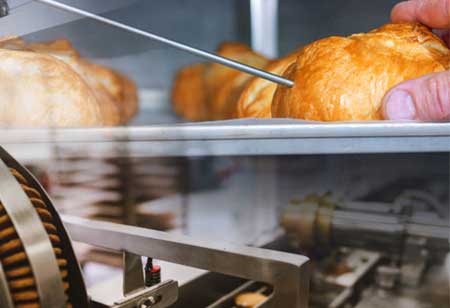Thank you for Subscribing to Food Business Review Weekly Brief
The Pillars of Alternative Protein Technology
Alternative protein products provide the same sensory experience and nutritional benefits as animal-based foods.

By
Food Business Review | Thursday, September 22, 2022
Stay ahead of the industry with exclusive feature stories on the top companies, expert insights and the latest news delivered straight to your inbox. Subscribe today.

Alternative proteins primarily consist of plant-based products. Market growth is substantial. Many market surveys have varied estimates, but there is a steady upward tendency. Ernst & Young forecasts the global meat substitute business could reach $153 billion by 2030, and BCG predicts it might reach $290 billion by 2035.
FREMONT, CA: Alternative protein products provide the same sensory experience and nutritional benefits as animal-based foods. Products include dairy, eggs, meat, fish, and seafood. Fresh products, 3R (ready-to-eat, ready-to-heat, and ready-to-cook), functional foods, snack foods, and animal-derived commercial or household food ingredients and additives are among the numerous product formats. Different products and applications require distinct technological innovations and advancements.
Plant-based proteins: Plant ingredients are extracted from crops and processed mechanically, chemically, or biologically to replace proteins, lipids, and fibers in animal products. The three main stages of R&D are crop development, ingredient optimization, and formulation and manufacturing of the final product.
Scientists and businesspeople are searching for novel plant-based protein sources, such as fava beans, duckweed, and rapeseeds. The revolutionary ingredient of Sustainable Planet Ltd., water lentil protein, is one of these highly anticipated novel ingredients. Due to their nutritional, functional, and processing qualities, soybeans, peas, rice, wheat, and mung beans are more frequently used as raw materials. Various breeding techniques, ranging from conventional to modern genetic engineering techniques, are utilized or developed to optimize crops' protein content, quality, and function. For example, soybeans without a beany flavor can reduce processing time and increase consumer acceptance.
Research and development also play a role in the production of these crops. Milling, extracting, and processing plants produce protein isolates or concentrate. Some plant proteins undergo additional processing, such as hydrolysis, to improve their functional properties for applications.
During the final stage of product formulation and manufacturing, water, oil, food binders, additives, flavors, and other formulations are added to the reconstituted base ingredients to achieve the desired texture and sensory properties. Various techniques shape and structure the mixture into final products, including stretching, pressing, folding, layering, extrusion, and 3D printing. Consumers can sample Garden Gourmet's plant-based 3R food products, which include burgers, sausages, and many others.
Microbial fermentation-derived proteins: Humans have utilized fermentation technology for centuries. Fermentation produces whole-cell biomass or valuable fractions through the controlled growth of any microbial species. Its ability to produce food efficiently makes fermentation a highly anticipated process. In the alternative protein industry, there are three types of fermentation: traditional fermentation, biomass fermentation, and precision fermentation.
Some of the most beloved foods, including wine, beer, bread, and yogurt, are produced through traditional fermentation. Using active microorganisms of natural origin, such as yeast, and raw materials like flour dough, results in products with distinctive organoleptic and nutritional properties. Traditional Indonesian food, tempeh, is a prime example. Beans are fermented by the fungus Rhizopus and then compressed into dense, meaty loaves. It is now a popular vegan meat substitute. Although biomass fermentation is similar to conventional fermentation, it relies on microorganisms with high protein content. Fungi and algae are two microorganisms utilized frequently in biomass fermentation. Noblegen's Euglena gracilis-based protein and Alver's Chlorella-based protein are not lagging behind this microbial wave. Precision fermentation, unlike the other two methods, uses microorganisms as cell factories to produce target molecules. It involves inserting a DNA fragment from the target molecule into a microorganism host. Yeast, bacteria, microalgae, or fungi are selected based on their compatibility with the target molecule. Precision fermentation is not a new concept in the biopharmaceutical industry. Insulin synthesized synthetically is the first product of this production method. It is highly anticipated by the food industry and can be used to produce proteins, fat, flavorings, vitamins, and coloring pigments, among other things.
Microorganisms play a crucial role in fermentation, so strain development is a top innovation priority. Most microorganisms on Earth have not yet been discovered, with some estimates at over 99 percent. The high-throughput screening method, advanced genetic engineering, and machine learning are the most promising technologies in this field. The optimization of substrates and the design of bioprocesses are also important innovation priorities. There is a close affinity between cost and scalability. As fermentation substrates, companies use agro-food byproducts such as okara. Not only does it reduce the cost of purchasing raw materials, but it also creates a circular economy.






